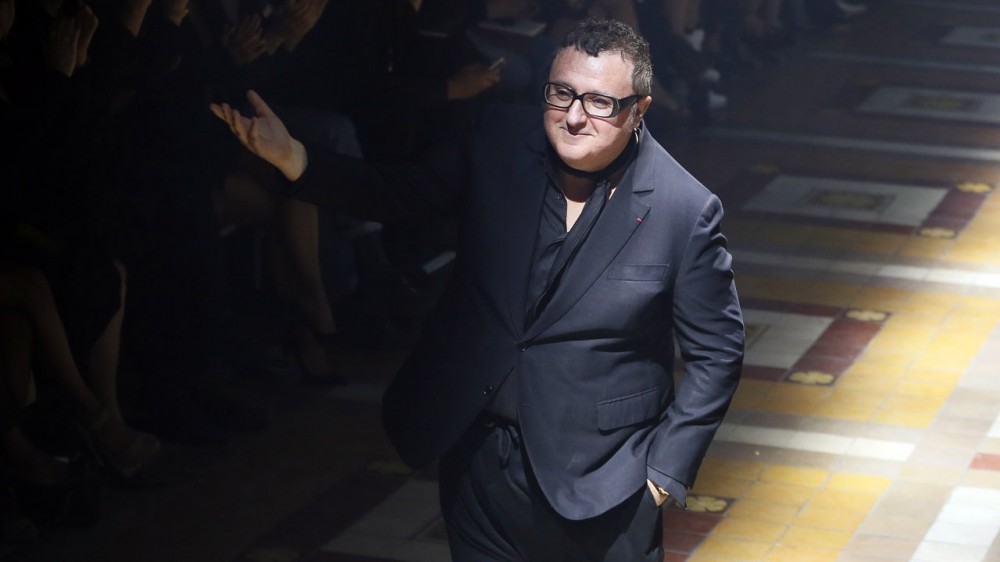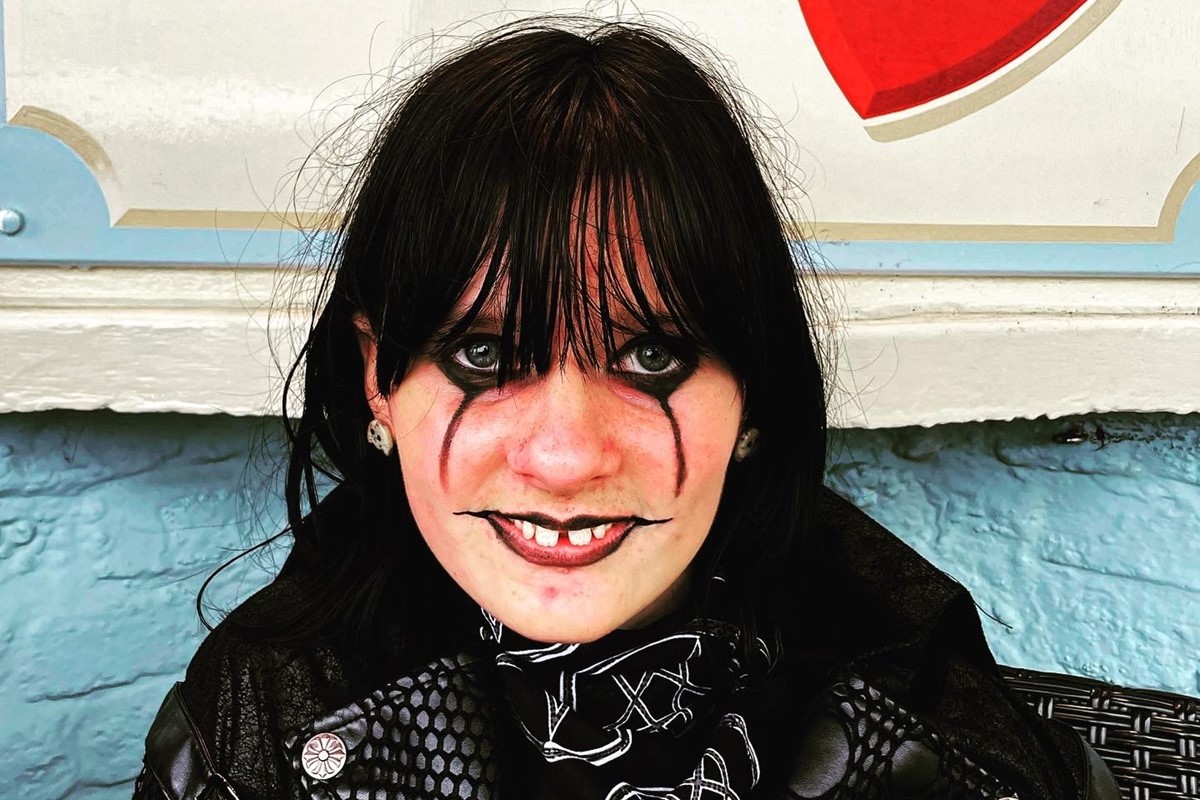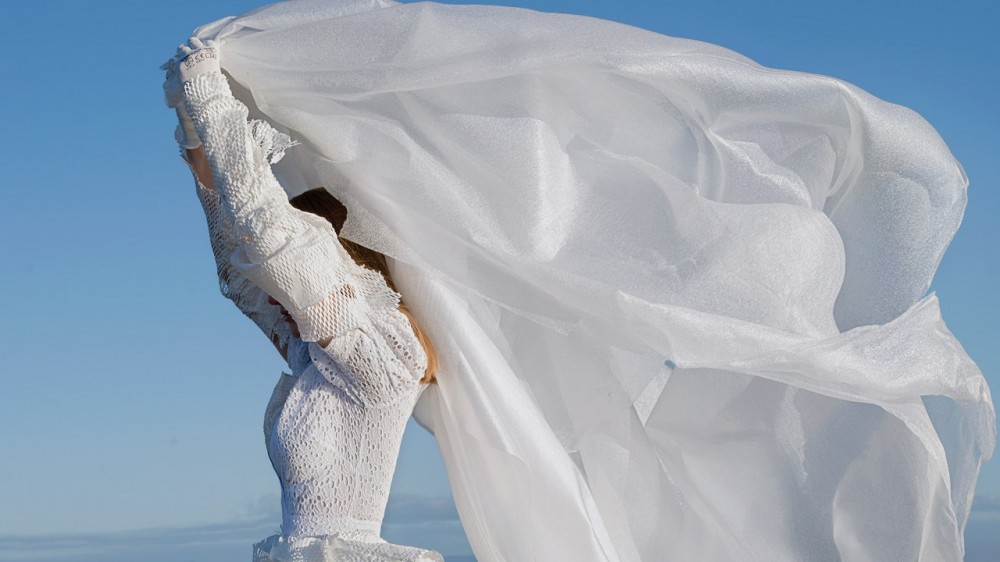
Remembering Alber Elbaz, Visionary Designer, Generous Spirit, and Friend to All
Alber Elbaz, who succumbed to complications from Covid-19 at the age of 59, leaves a tremendous void in the fashion industry that he illuminated through the decades with his alluring designs and visionary thinking.
Albert Elbaz was born in Casablanca. He was ten when the Elbazes, like many Jewish families in Morocco at the time, left the country. They settled in the industrial city of Holon in Israel. Alber served his compulsory military service in the Israel Defence Forces and subsequently discovered his vocation while studying at the Shenkar College.
Although she might have preferred him to pursue training as a doctor—an idea Alber flirted with—his mother nevertheless recognized his talent and gave him $800 to pursue his fashion dreams in New York (where Alber dropped the soft ‘t’ in Albert so that it would be easier for Americans to pronounce his name correctly). He worked for a bridal manufacturer before joining the studio of Geoffrey Beene in 1989. The prickly but brilliant Louisiana-born designer had a huge impact on the American fashion landscape at the time, influencing a whole generation of emerging young designers, Marc Jacobs and Isaac Mizrahi among them. Mr. Beene (as he was universally known) recognized Alber’s talent, and his protegé’s whimsical touch and powerful creative imagination were very clearly in evidence in the Beene collections in the early 1990s (during the Elbaz years the Beene label included the symbol of a hand-drawn bow). Beene was a hard taskmaster but his workrooms had a technique that was unmatched in the New York ateliers at the time, and Beene had an extraordinary instinct for unusual and innovative combinations of fabric and color, and for sinuous cutting, that Alber quickly absorbed. Thenceforth, Alber would always describe himself first and foremost as “a dressmaker.”
In 1996, Alber moved to Paris as the creative director of Guy Laroche. His first runway show for the brand was not without incident—I remember that many of the pearl necklaces that laced up the high heeled shoes came unraveled so that the girls struggled to walk and the runway was dangerously sprinkled with loose pearl beads. Alber’s appearance at the end of the show, however, with his Charlie Chaplin walk and wave, gave the whole thing an injection of slapstick humour, turning a negative into a positive.
Alber didn’t have long to prove his worth at Laroche, however, because Pierre Berge was taking note, and, with the approval of Yves Saint Laurent, brought Alber in as the creative director of the ready to wear at Saint Laurent. The match seemed serendipitous—here was another designer who was born and raised under the North African sun and responded to the life enhancing color and fluid sensuality of indigenous Arabic clothing, as well as Parisian style. Alber’s collections were respectful and stylish (“a strong modern take on the house’s timeless chic,” I noted of his fall 2000 show), and beautifully showcased on It Girls such as Chloe Sevigny, but he didn’t have long to explore the YSL legacy because a season later the Gucci Group had acquired the brand and Tom Ford was installed at its design helm.
It would not be the last time that Alber was disenchanted with the ruthlessness of the fashion system. Soon after, Alber took over the design reins of Lanvin, the storied French couture house that had been founded by Jeanne Lanvin who, like Gabrielle Chanel, first established herself as a milliner before opening her fashion house in 1909. Madame Lanvin was known for her elaborate clothes and complicated dressmaker techniques that appealed to French actresses and romantically-minded society women (Elizabeth Bowes-Lyon, mother of Queen Elizabeth II, chose a Medieval-inspired Lanvin model, copied by the English court dressmaker Madame Handley Seymour, when she married the future King George VI). The long dormant brand had recently been acquired by a consortium that included Shaw-Lan Wang, a flamboyant figure in the front rows at Alber’s Lanvin collections.
At Lanvin, Alber finally found his fashion voice. How can I make a woman more beautiful? is the question that he was always asking himself. What can I do for a woman to make life better and easier? his clothes always answered. His innovations included pre-washed textiles and unfinished edges, dresses crafted from a single swathe of textile and fastening with zippers prominently set in on broad canvas ribbons, and pearls and flamboyant costume jewelry wrapped in tulle.
Alber always let the fabric do the talking, something he would have learned chez Mr. Beene, and his swathes of supple or stiff fabrics were brilliantly manipulated with a minimum of seams to create alluring designs that flattered the wearer. His work always displayed, as the New York Times’s Vanessa Friedman noted after one show, “generosity towards women and their bodies.”
The presentations themselves, usually in darkened spaces with the girls lit in low, smoky light, had tremendous drama and energy to them and were always highlights of the Paris season, and Alber himself—generous, witty, thoughtful, kind—the sort of man who would send flowers to fellow designers on the eve of their shows, and delightfully hand-illustrated cards as thank you notes, was widely beloved in an industry replete with combative personalities.
For a few seasons, Alber brought some of his resort collections to New York where he created charming sets at Milk Studios (often involving elements that he had hand-drawn himself), and presented his clothes with intelligent but often hilarious running monologue that revealed he could have had an alternative career as a stand-up comic with a nice line in self deprecating schtick.
Alber’s Lanvin work hit global audiences when Tilda Swinton won Best Actress for Michael Clayton at the 2008 Academy Awards, wearing Alber’s simple asymmetric fall of black panne velvet that made everyone else on the red carpet look overdressed. Alber also dressed Meryl Streep as a golden Oscar statuette in 2012 when she won Best Actress for Iron Lady. It was Streep who presented Alber with the Superstar Award at the Fashion Group International’s Night of Stars in 2015. “Alber’s dresses for Lanvin are the only ones that when I wear them I feel like myself—or even a better version of her!” Streep told the crowd, “On the important occasions when it becomes necessary for me to become ‘Meryl Streep’—that outsize, overpraised monument to the changing status of women in the cinema and the world—that’s when I need Alber the most. He is undaunted by all of it—my insecurities, my weight … my height, my age. He just makes me feel lovely.”
Alber himself thanked the seamstresses in his atelier, and noted that “All it takes to make someone a star is to give him or her a lot of love.” But he had some pointed comments for the fashion industry as well, noting that “we designers started as couturiers with dreams, with intuitions and with feelings…Then we became creative directors, so we have to create, but mostly direct. And now we have become image-makers, making sure it looks good in pictures. The screen has to scream, baby … loudness is the new cool,” he noted, “I prefer whispering. I think it goes deeper and lasts longer.”
Alber’s thoughts perhaps reflected his roiling disagreements with Mrs. Wang over the future direction for the brand that he had so powerfully reinvented. In 2015, soon after Alber received his Superstar award, his 14-year association with Lanvin came to a shockingly abrupt end. There was stupefaction in the fashion industry when he wasn’t snapped up by another powerful brand, but perhaps a wounded Alber was biding his time.
He collaborated on a fragrance with Frederic Malle; Alber wanted to replicate “the smell or perfume of a dress.” When I met with him to discuss it Alber had just returned from his legion d’honneur ceremony: his second, in fact he was getting an “upgrade” (he was now an Officier de la Legion D’Honneur).
“I’m taking the time,” Alber explained when I asked him his thoughts about reentering the fashion fray, “I’m really thinking about what it is that I want to do next time, and how do I want to work, and what is it that I’m lacking, and what is it that we’re lacking in fashion? And how can we make it better? I’m questioning many things. I’m questioning the system. I mean, is it right to do all these shows? Is it right to do six seasons a year? What do women want? How do women dress?”
“You know, I really miss fashion,” he told me, “I needed to maybe get away from fashion to feel that I wanted to be back, but on my own terms … it’s not about a continuing and existing system, it’s about changing something in the system that doesn’t work. You know, my dream was to be a doctor so it’s all about finding the diagnosis of what doesn’t work and then giving some solution.”
Meanwhile, as Alber bided his time a new generation of fashion consumers in the fast moving game had grown up not knowing his name or understanding his legacy. A trip to Silicon Valley, however, proved to be an epiphany for Alber. Can tradition and technology co-exist? he asked himself after that visit. Is fashion still relevant today? And you know what? The answer is Yes, a big, big YES.
At the 2020 Forces of Fashion summit, I joined Alber for high tea at the Paris Ritz to discuss his new creative idea for the brand backed by the Swiss luxury group Richemont. We sat at the end of a long table (Alber was maniacal about health protocols), with empty places set for the dream tea party: Michelle Obama, Lady Gaga, Greta Thunberg, Jane Bomb (the female James Bond) et al. Alber revealed the name of the brand—AZ Factory, taking the first and last letter of his name and suggesting a comprehensive laboratory of ideas and new concepts. During our tea Alber promised “not a revolution, not an evolution—a reset.”
“Our job as designers,” he explained, “is not just to create fashion shows, but to work around needs and then to bring the dream, and combine somehow function and fashion.” Recalling Meryl Streep’s words, Alber told me “I’m not trying to transform anyone, I’m just trying to make everyone, as much as I can, a better version of themselves.” When he revealed his Spring 2021 AZ Factory offering it was “My Body,” a collection of ergonomic, sports-inspired dresses engineered to all shapes and sizes, from XXS to XXXXL.
As well as embracing body positivity, Alber took on technology, and environmental responsibility. “The inspiration is not coming from Emile Zola,” he told Sarah Mower, “it’s from me walking by the Seine, seeing people running, and thinking, how come people wear these clothes all year round, but fashion has to change four times a year?” It was going to be an exciting ride to see where his brand would take us.
Alber disliked the heat of high summer, but he maintained a deep connection to Morocco. His fall 2015 collection for Lanvin was inspired by what he called “the country of contradiction, the country of beauty and perfume and human heat.” That Malle fragrance smelled of a dress but it also evoked a Morccan souk. For a number of years Alber and his deeply supportive long-term partner Alex Koo rented the houses in Tangier of the antique dealer Gordon Watson, a great mutual friend. In Tangier, the summers are windswept as the Mediterranean roils into the Atlantic and the Atlantic crashes back, so Albert could bask in the refreshing weather of what he described as “an eclectic place. It’s so old and so decadent, and yet so amazing” he explained to me of its attraction, “For me it’s like, not just like a geographic zone, but it’s a time zone that is changing.” When Anouar Mesbahi Tayebi, the majordomo of the house where Alber and Alex spent so many happy summers together, announced in 2018 that he was getting married, Alber flew in specially for the ceremony and the festivities. He was the last to leave the dancefloor.



